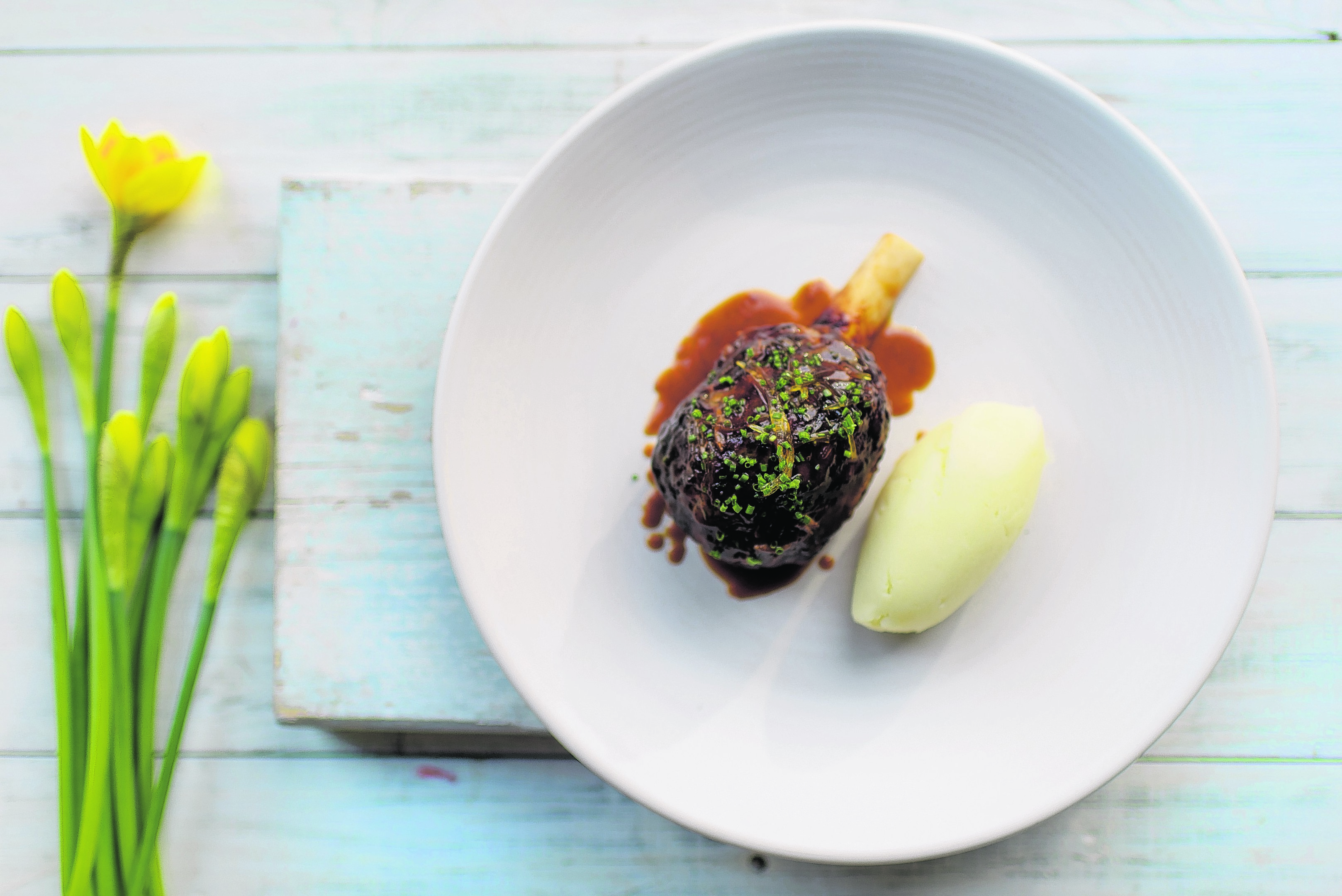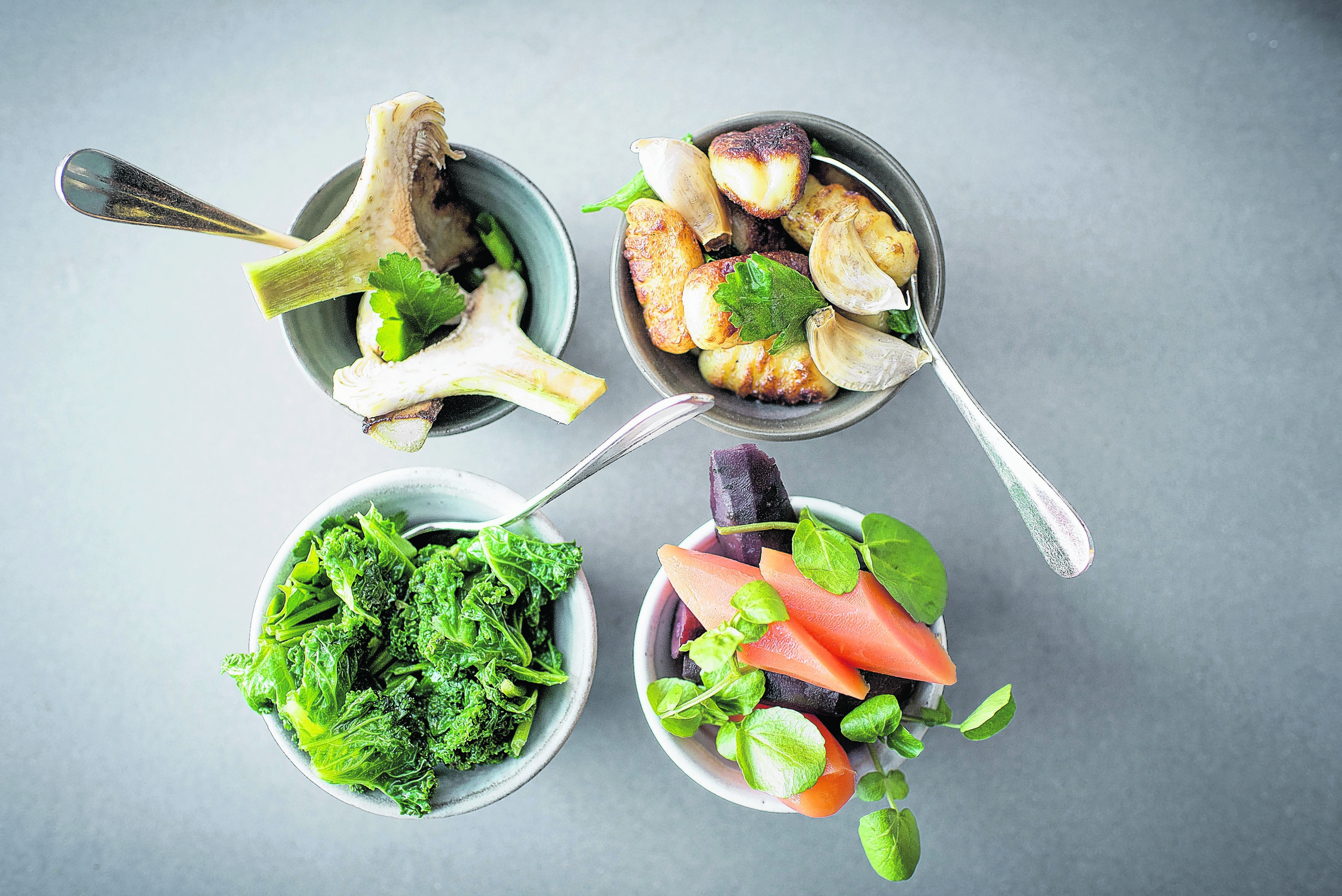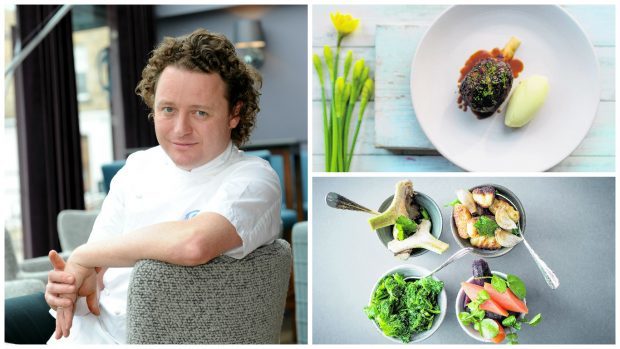The long Easter weekend is the perfect opportunity to gather friends and family, and linger over a long and relaxing meal.
It’s also a great chance to spend a little bit more time in the kitchen and try something new as the welcome spring season presents some incredibly delicious and vibrant ingredients.
Lamb shanks can be a really tasty alternative and ideal for feeding a crowd. The shank is the meaty cut at the lower end of the leg.
Though it’s a bit of a forgotten cut, it’s great value and if it’s cooked in the right way, it can be truly flavoursome. The best way to get the most from this cut is to slow cook it – braising the meat means it should become meltingly tender, juicy and tasty.
Cooking it until it almost falls off the bone is a real joy. You can present it in a big pot for everyone to help themselves, or, because it’s a smaller joint, you can serve everyone their own lamb shank on the bone – either way it’s a really appealing dish that’s also fun to eat and enjoy. For me, this is a dish that really earns its place at the Easter dinner table.
While the centrepiece is important, I always find preparing a collection of fresh spring sides is a great idea. A selection of seasonal vegetables served in different ways is perfect and usually keeps everyone happy. The fresh, bright colours they bring to the table are a real pleasure to see and a sign that spring has well and truly arrived!
Braised Lamb Shanks with Creamy Mashed Potato and Lemon Confit

SERVES 4
4 x lamb shanks
1 onion, peeled and sliced
2 fennel bulbs, trimmed and sliced
2 garlic cloves, peeled and chopped
1tsp fennel seeds
1tbsp ground cumin
Bouquet garni
300ml of white wine
500ml lamb stock
Sea salt and freshly ground black pepper
Olive oil for cooking
Chopped lemon thyme for garnish
FOR THE LEMON CONFIT
1 lemon
Sugar to taste
FOR THE MASHED POTATOES
5 or 6 large baking potatoes
300g rock salt
100g butter
Heat the oven to 160C/Gas 2-3. Season the lamb shanks well all over with salt and pepper. Heat a deep heavy-based ovenproof saute pan (or flameproof casserole) over a medium-high heat and add a drizzle of olive oil. Brown the lamb shanks in the pan (in two batches, or one at a time if that’s easier) to colour all over. Place the browned shanks on a plate on the side.
Return the pan to a medium-low heat and add a little more oil if needed, followed by the onion, sliced fennel, garlic, fennel seeds, ground cumin and bouquet garni. Sweat gently for 3-4 minutes. Then pour in the white wine and let bubble and reduce by half. Add the stock and bring to the boil.
Replace the lamb shanks in the pan, immersing them in the mixture. Put a lid on the pan and place in the oven. Cook for one-and-a-half hours until the meat is very soft and starting to fall from the bone.
FOR THE POTATOES
Preheat the oven to 200C/Gas Mark 6. Scrub the potatoes well. Pour the salt on to a baking tray and lay the potatoes on top. Bake for one-and-a-half hours or until the skins are crisp and the flesh soft.
While the potatoes are still hot, scoop out the flesh into a bowl. Warm the butter and milk in a pan over medium heat. Start to mash the potatoes and slowly add the milk and butter. Mix until very smooth and glossy, then season to taste. Serve immediately.
FOR THE LEMON CONFIT
Remove all of the white pith. Shred the lemon peel into thin strips (julienne). Place the peel in cold water and bring it to the boil, then strain.
Repeat blanching in cold water and bring to the boil twice more (three times in total). After the third blanch, place the blanched lemon strips in the lemon juice and add enough sugar to balance the acidity. Simmer the lemon strips in the lemon “syrup” until just tender. Re-taste and add more sugar if needed.
TO SERVE
Place a lamb shank in each warm serving bowl with the mashed potato. Spoon over the cooking sauce and lemon confit. Sprinkle with chopped lemon thyme.
Potato Gnocchi
Using the right type of potatoes in this recipe is vital. Make sure they are as floury and as dry as possible once cooked.
500g floury potatoes
500g rock salt
100g flour
1 egg
1 egg yolk
Vegetable oil
Salt and pepper
TO PREPARE THE GNOCCHI
Preheat the oven to 200°C/Gas 6. Place the potatoes on a bed of salt and bake for one-and-a-half hours. (The salt helps to draw out the moisture, leaving a lighter potato to work with.) While the potatoes are still hot – this is important – scoop out all the flesh and pass it through a drum sieve. Sift the flour and set aside.
Whisk the egg and the egg yolk together. Fold in a small amount of hot potato, in effect tempering the egg. Then fold the egg and potato mix into the rest of the potato. Once it is completely incorporated, fold in the sifted flour, making sure to not let lumps form. Season to taste.
Knead the mixture into a ball and then shape into rolls about 1.5cm in diameter. Cut these into sections about 2.5cm long.
To shape the gnocchi, hold a fork in one hand and place a piece of dough against the tines of the fork. Using your thumb, press in and down the length of the fork. The gnocchi should curl slightly and take on the impression of the fork – good for catching sauce.
TO COOK THE GNOCCHI
Bring a large pan of seasoned water to the boil. When the water is steaming (not bubbling), add the gnocchi and leave them until they float up to the top. Remove immediately and allow to cool. Toss in a tablespoon of vegetable oil to stop the gnocchi from sticking together. Place in a large bowl and enjoy.
Roasted Carrots
SERVES 4
2 large orange carrots
2 large purple carrots
Handful of watercress
Rapeseed oil
I love mixing orange and purple carrots to serve as a side as it brings so much colour to the table. Thickly slice the carrots into even slices. Boil the carrots for four minutes or until just tender, then drain well.
Mix rapeseed oil and lemon juice in a large bowl or serving dish, then toss with the carrots. Season to taste. Garnish with watercress
Raw and Roasted Artichoke

SERVES 4
2 large artichokes – chopped and peeled
Rapeseed oil
Salt and pepper to taste
Parsley
I like to serve a mix of roasted and raw artichokes. Keep one of the chopped artichokes aside, and mix in a bowl with a little rapeseed oil.
To cook the artichoke boil the artichoke for 6-8 minutes, then drain. Heat the oil in a heavy-bottom oven-proof pan, then fry the artichokes for 2-3 minutes. Season with salt and pepper, top with a sprig of parsley and serve.
Buttered Kale
SERVES 4
200g shredded kale
Knob of butter
Salt and pepper to taste
Blanch the kale in salted water. Heat the butter in a frying pan over a medium heat. When the butter is foaming, add the blanched kale and stir until coated in the melted butter and warmed through. Season, to taste, with salt and freshly ground black pepper.
